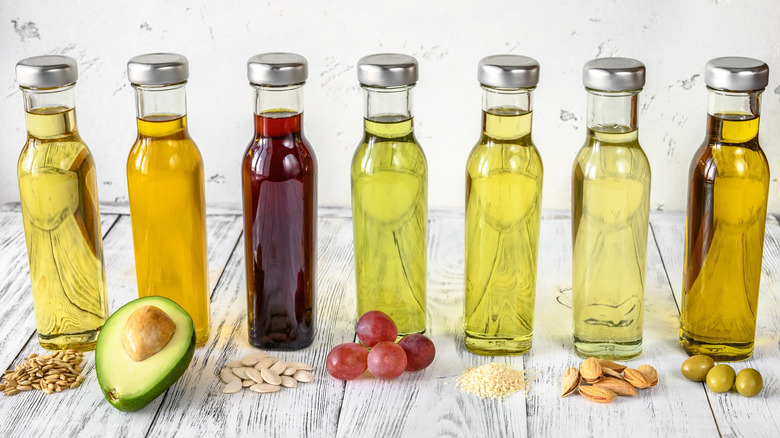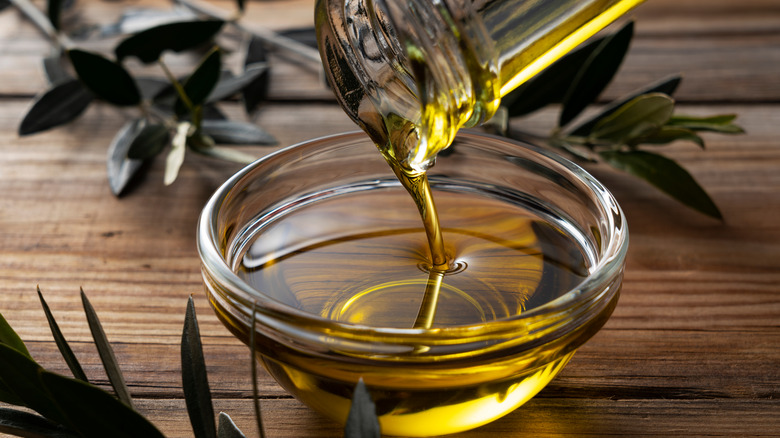Instead Of Limiting Your Cooking To Just One Oil, Mix Them Up
If you want big flavor from your cooking oil, you might resort to just pouring more in your pan. But what if we told you the results would be just as good with a little bit of mixing? The temptation to go big in cooking is very real. Whether for yourself, or a table of hungry people, the last thing you want is to turn out bland, boring food. For many an inexperienced chef, this can mean going overboard with spices, or piling on extra ingredients, in a well-intentioned attempt to make something as flavorful as possible. We've all grown up with the idea that "more is better," especially when it comes to food. Why would we cut back on the flavor of something we love?
Cooking oil can have this problem too. We all love the taste of olive oil, so naturally you want to use plenty of it when you fry some chicken cutlets. The problem? Well, there are actually a few. The flavors of some oils, especially olive oil, but also sesame and peanut, can actually end up overpowering your dish. The other issue is price. Good cooking oils are expensive, and as wonderful as your imported, cold-pressed olive oil tastes, you don't want to dump $10 of oil into your pan every time you make dinner. Thankfully, you can still get the great taste of your cooking oil while using a lot less than you might think.
Mixing cooking oils keeps the flavor while saving money
The great thing about that super-flavorful, buttery olive oil you bought? It's still going to add a lot of flavor if you dilute it. You can mix your more flavorful oils with an equal part neutral oil, like canola or vegetable, and still retain a lot of taste. This is particularly good for dishes where you want the oil's flavor to blend into the meal instead of being a dominant flavor. If you are drizzling your oil as a condiment, or making a simple pasta dish where olive oil is the star, by all means stick with the good stuff. But, if you're sautéing some meat or vegetables, and you just want a little flavor from your cooking oil, mixing oils can give you what you need without wasting too much of a precious kitchen resource.
The one thing to look out for is the smoke point of the oils you're mixing. You may have heard you can raise the smoke point of some cooking fats by mixing them with oil that can tolerate higher temperatures, but it's a myth. Butter or olive oil will still burn and impart acrid flavors at their normal temperatures, even when mixed with a high-heat oil like corn. So go out and buy that expensive bottle of olive oil you've been coveting, then make it last by using a little at a time. Sometimes going small really is the right way.

